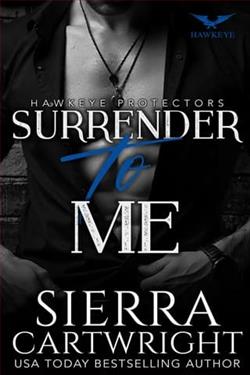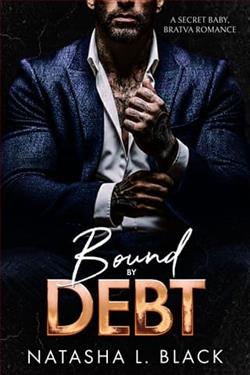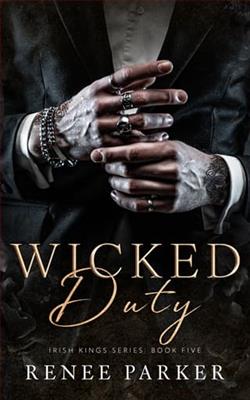Page 26 of The Cold Moon (Lincoln Rhyme 7)
Next time, pack warm. What were you thinking?
Riding in a pungent cab, thirty-something Kathryn Dance held her hands out in front of a backseat heater exhaling air that wasn't hot, wasn't even warm; at best, she decided, it was uncold. She rubbed together
her fingers, tipped in dark red nails, and then gave her black-stockinged knees a chance at the air.
Dance came from a locale where the temperature was seventy-five, give or take, all year-round and you had to drive up Carmel Valley Road a long, long way to find enough sledding snow to keep your son and daughter happy. In her last-minute packing for the seminar here in New York, somehow she'd forgotten that the Northeast plus December equals the Himalayas.
She was reflecting: Here I can't drop the last five pounds of what I gained in Mexico last month (where she'd done nothing but sit in a smoky room, interrogating a suspected kidnapper). If I can't lose it, at least the extra weight ought to do its duty as insulation. Ain't fair . . . She pulled her thin coat more tightly around her.
Kathryn Dance was a special agent with the California Bureau of Investigation, based in Monterey. She was one of the nation's preeminent experts in interrogation and kinesics--the science of observing and analyzing the body language and verbal behavior of witnesses and suspects. She'd been in New York for the past three days presenting her kinesics seminar to local law enforcement agencies.
Kinesics is a rare specialty in police work, but to Kathryn Dance there was nothing like it. She was a people addict. They fascinated her, they electrified her. Confounded and challenged her too. These billions of odd creatures moving through the world, saying the strangest and most wonderful and terrible things . . . She felt what they felt, she feared what scared them, she got pleasure from their joy.
Dance had been a reporter after college: journalism, that profession tailor-made for the aimless with insatiable curiosities. She ended up on the crime beat and spent hours in courtrooms, observing lawyers and suspects and jurors. She realized something about herself: She could look at a witness, listen to his words and get an immediate sense of when he was telling the truth and when he wasn't. She could look at jurors and see when they were bored or lost or angry or shocked, when they believed the suspect, when they didn't. She could tell which lawyers were ill-suited to the bar and which were going to shine.
She could spot the cops whose whole heart was in their jobs and the ones who were only biding their time. (One of the former in particular caught her eye: a prematurely silver-haired FBI agent out of the San Jose field office, testifying with humor and panache in a gang trial she was covering. She finagled an exclusive interview with him after the guilty verdicts, and he finagled a date. Eight months later she and William Swenson were married.)
Eventually bored with the reporter's life, Kathryn Dance decided on a career change. Life turned crazy for a time as she juggled her roles as mother of two small children and wife and grad student, but she managed to graduate from UC-Santa Cruz with a joint master's in psych and communications. She opened a jury consulting business, advising attorneys which jurors to choose and which to avoid during voir dire jury selection. She was talented and made very good money. But six years ago, she decided to change course once again. With the help of a supportive, tireless husband and her mother and father, who lived in nearby Carmel, she headed back to school once more: the California State Bureau of Investigation training academy in Sacramento.
Kathryn Dance became a cop.
The CBI doesn't break out kinesics as a specialty so Dance was technically just another investigative agent, working homicides, kidnappings, narcotics, terrorism and the like. Still, in law enforcement, talents are spotted early and news of her talent quickly spread. She found herself the resident expert in interview and interrogation (fine with her, since it gave her some bargaining power to trade off undercover and forensic work, which she had little interest in).
She now glanced at her watch, wondering how long this volunteer mission would take. Her flight wasn't until the afternoon but she'd have to give herself plenty of time to get to JFK; traffic in the city was horrendous, even worse than the 101 Freeway around San Jose. She couldn't miss the plane. She was eager to get back to her children, and--funny about caseloads--the files on your desk never seem to disappear when you're out of the office; they only multiply.
The cab squealed to a stop.
Dance squinted out the window. "Is this the right address?"
"It's the one you gave me."
"It doesn't look like a police station."
He glanced up at the ornate building. "Sure don't. That'll be six seventy-five."
Yes and no, Dance thought to herself.
It was a police station and yet it wasn't.
Lon Sellitto greeted her in the front hallway. The detective had taken her course in kinesics the day before at One Police Plaza and had just called, asking if she could come by now to give them a hand on a multiple homicide. When he'd telephoned he'd given her the address and she'd assumed it was a precinct house. It happened to be filled with nearly as much forensic equipment as the lab at the Monterey CBI headquarters but was, nonetheless, a private home.
And it was owned by Lincoln Rhyme, no less.
Another fact Sellitto had neglected to mention.
Dance had heard of Rhyme, of course--many law enforcers knew of the brilliant quadriplegic forensic detective--but wasn't aware of the details of his life or his role in the NYPD. The fact he was disabled soon failed to register; unless she was studying body language intentionally, Kathryn Dance tended to pay most attention to people's eyes. Besides, one of her colleagues in the CBI was a paraplegic and she was accustomed to people in wheelchairs.
Sellitto now introduced her to Rhyme and a tall, intense police detective named Amelia Sachs. Dance noted at once that they were more than professional partners. No great kinesic deductions were necessary to make this connection; when she walked in, Sachs had her fingers entwined with Rhyme's and was whispering something to him with a smile.
Sachs greeted her warmly and Sellitto introduced her to several other officers.
Dance was aware of a tinny sound coming from over her shoulder--earbuds dangling behind her. She laughed and shut off her iPod, which she carried with her like a life-support system.
Sellitto and Sachs told her about the homicide case they needed some help on--a case that Rhyme seemed to be in charge of, though he was a civilian.
Rhyme didn't participate much in the discussion. His eyes continually returned to a large whiteboard, on which were notations of the evidence. The other officers were giving her details of the case, though she couldn't help but observe Rhyme--the way he squinted at the board, would mutter something under his breath and shake his head, as if chastising himself for missing something. Occasionally his eyes would close. Once or twice he offered a comment about the case but he largely ignored Dance.
She was amused. The agent was used to skepticism. Most often it arose because she simply didn't look like a typical cop, this five-foot-five woman with dark blond hair worn usually, as now, in a tight French braid, light purple lipstick, iPod earbuds dangling, the gold and abalone jewelry her mother had made, not to mention her passion--quirky shoes (chasing perps didn't usually figure in Dance's daily life as a cop).















